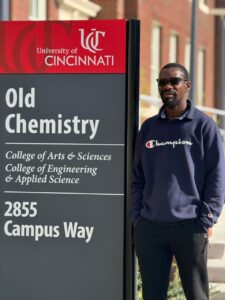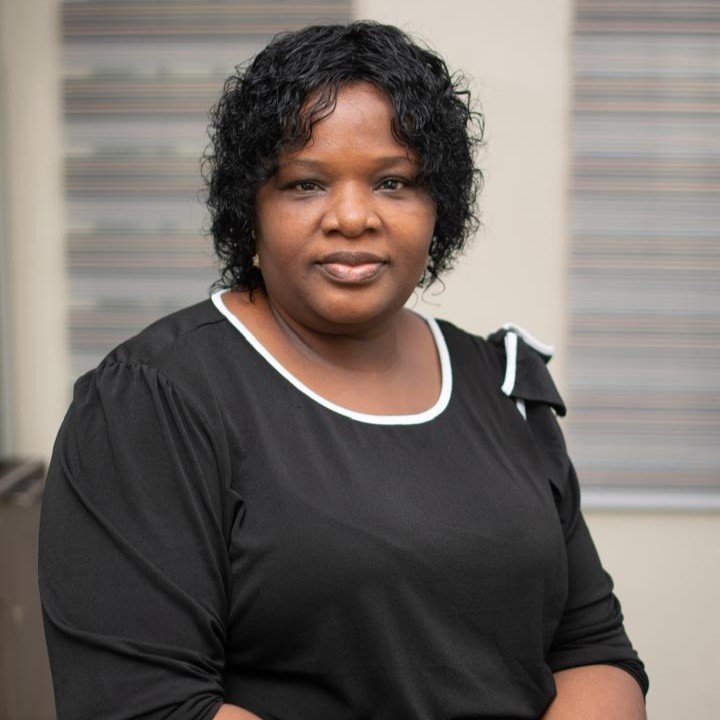In a breakthrough that could redefine cancer care, Nigerian scientist, Rasheed Adigun, a postdoctoral candidate at the University of Cincinnati in the United States, is developing a hydrogel innovation capable of delivering chemotherapy drugs directly to tumours, minimising side effects and sparing healthy tissues. His work is set to mark a shift from discovering new drugs to perfecting how they reach their targets, offering hope for safer and more effective cancer treatment. Christiana Alabi-Akande reports:
Every October, pink ribbons bloom across the world, symbolising hope, resilience, and remembrance. Breast Cancer Awareness Month is more than a campaign; it’s a collective reflection on battles fought, lives saved, and the urgent need for better and safer therapies.
This year, the World Health Organisation (WHO) chose the theme; “Every Story is Unique, Every Journey Matters.” The theme, according to WHO, recognises the diversity of experiences and reinforces the need for compassionate, timely, and quality care for all, regardless of geography, income, or background.
Behind every breast cancer diagnosis lies a deeply personal story, one of courage, resilience, and hope.
Scary data
According to WHO, breast cancer is the most commonly diagnosed cancer among women worldwide. In 2022, approximately 2.3 million women were diagnosed, while another 670,000, comprising mothers, sisters, daughters, and friends, died from the disease.
While the five-year survival rate in high-income countries exceeds 90 per cent, the figure drops to 66 per cent in India and 40 per cent in South Africa. These disparities, experts say, lie not in the courage of women but are driven by unequal access to early detection, timely diagnosis, and effective treatment.
WHO noted that if the current trend continues, the incidence and mortality are projected to rise by 40 per cent by 2050, hence the need for urgent and coordinated action. The WHO’s message is clear: “Where a woman lives should not determine whether she survives.”
The WHO’s Global Breast Cancer Initiative (GBCI), established in 2021, is driving coordinated efforts to reverse this trend through what it calls the 60–60–80 targets: diagnosing 60 per cent of invasive cancers early, ensuring diagnoses within 60 days, and guaranteeing 80 per cent treatment completion.
Emerging innovation
Amid the statistics and global commitments, stories of innovation are quietly emerging, reshaping the future of cancer treatment. One of such stories begins not in a hospital ward, but in a biomaterials laboratory at the University of Cincinnati, USA, where a Nigerian scientist, Rasheed Adigun, is reimagining how chemotherapy reaches tumours.

For decades, the fight against cancer has centred on discovering new molecules, new genetic targets, and more powerful drugs. Mr Adigun belongs to a new generation of scientists who believe that the future is not dependent on creating new drugs but changing the materials that carry those drugs, the silent scaffolds that decide whether a molecule reaches its mark or misses it.
At the Simms Lab of Functional Biomaterials, Mr Adigun is developing a hyaluronic acid–lipid hydrogel nanocomposite, a cutting-edge material designed to deliver anticancer drugs directly to tumours with remarkable precision.
His goal, he said, is to ensure that life-saving drugs go exactly where they are needed without collateral damage to other parts or organs in the body.
Injected directly into the tumour site, the hydrogel releases the drug locally, sparing healthy tissues from the devastating chemotherapy. Mr Adigun’s system can carry drugs of any molecular weight or solubility, and because it can be injected directly at the tumor site, it minimises systemic exposure and toxicity, meaning that it delivers the punch of chemotherapy precisely where it’s needed and nowhere else.
READ ALSO: 80m Nigerians without power, 40m offline: Experts warn of deepening rural digital divide
The scientist explained that for decades, drugs like doxorubicin have been pillars of cancer therapy, but noted that while the drugs are potent enough to kill aggressive tumor cells, they also bring with them a devastating list of side effects ranging from heart damage and hair loss to immune suppression and tissue necrosis.
Their toxicity, he said, is not due to malice in design, but to biology itself, as the molecules, once in the bloodstream, do not discriminate but move freely, attacking both healthy and malignant cells. He further explained that their poor solubility often makes it difficult to deliver them effectively. “It’s a cruel irony- medicine powerful enough to cure can also cause profound harm.”
“The implications are profound. Localised delivery not only spares healthy tissues from the ravages of chemotherapy but also allows for higher effective doses at the tumor site. It reduces side effects like cardiomyopathy, a major risk with doxorubicin, and could make treatment safer, more tolerable, and ultimately more effective. The hydrogel itself degrades harmlessly in the body after releasing its cargo, leaving behind no residue and no trail of damage,” he reiterated.
From Chemistry to compassion
Mr Adigun’s journey began far from Cincinnati. With a first degree in Chemistry at the Obafemi Awolowo University (OAU), Ile-Ife, a PhD from the University of Pretoria in South Africa, and a postdoctoral fellowship at H3D Drug Discovery and Development Centre, University of Cape Town, he spent years designing and synthesising new drug candidates for infectious diseases.

But during those years, he witnessed a frustrating pattern, promising compounds failing clinical trials not because they lacked potency, but because they could not reach their intended targets effectively. Also, poor solubility, off-target toxicity, and nonspecific distribution were recurring villains in the story of drug discovery.
This realisation changed the trajectory of his career. When he moved to the United States, for the current research at the University of Cincinnati, he carried with him both his chemistry expertise and a new question: What if the problem isn’t the drug itself, but how it’s delivered?
Mr Adigun said; “In many early projects, we thought the molecule was the hero, now I believe the delivery is equally important. A great drug trapped in a bottle by solubility or toxicity is a wasted victory.”
As Breast Cancer Awareness Month draws attention to the ongoing need for better therapies, Mr Adigun’s work offers a glimpse into what that future could look like, one where the word “chemotherapy” no longer conjures fear, where potent drugs like doxorubicin can be used without their destructive shadows, and where a simple injection at the tumor site could replace hours of debilitating treatment.
READ ALSO: Lassa fever kills corps member in Ogun – Development Reporting
His research sits at the crossroads of Chemistry, Biology, and Engineering, demonstrating that innovation doesn’t always mean invention of the new, but often the reimagining of what is possible. It is a vision that blends scientific precision with deep human empathy, which reminds that the ultimate goal of research is not just to conquer disease, but to restore life and dignity to those who fight it.


